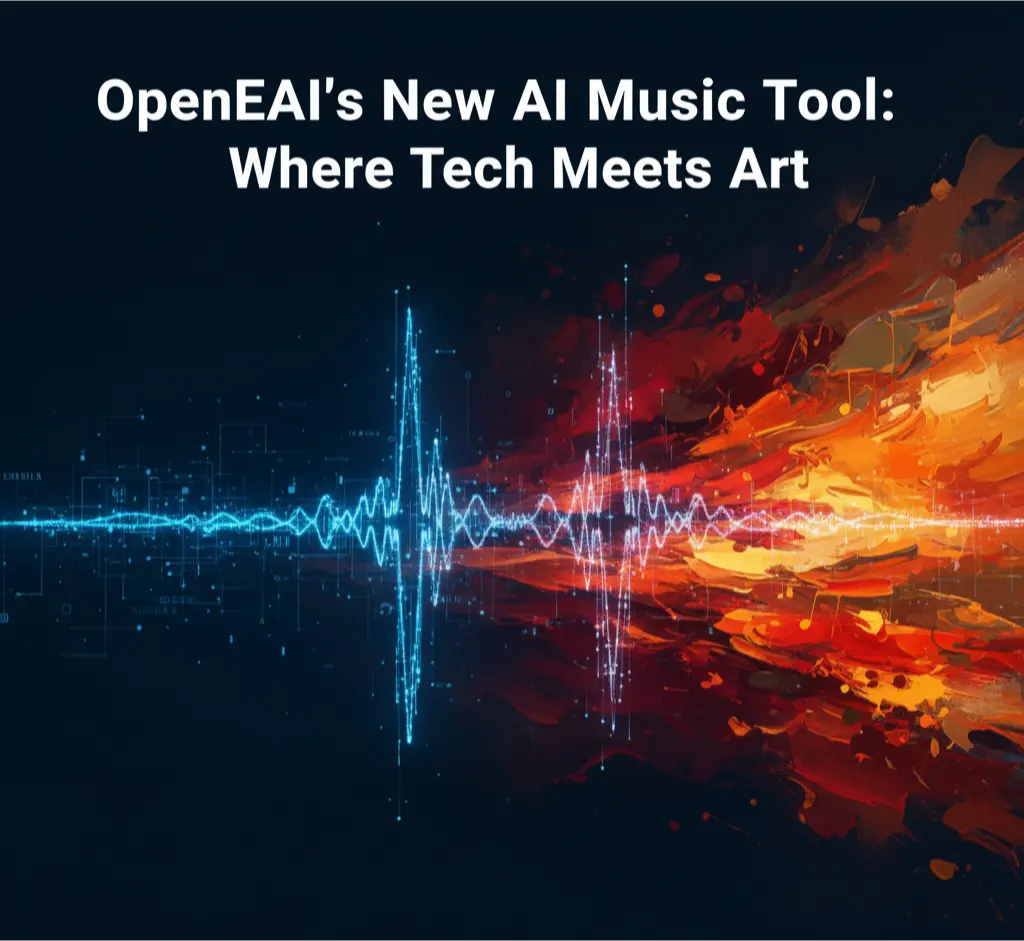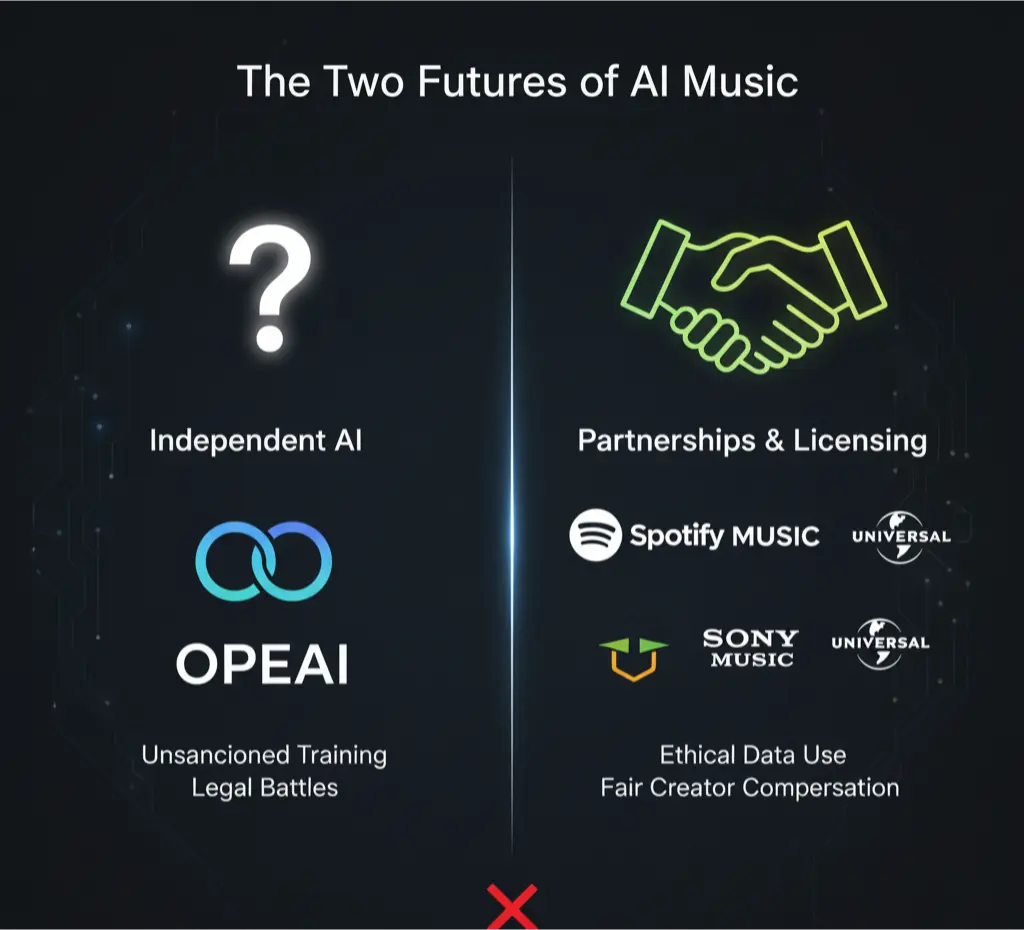I Created a Grammy-Quality Song in 3 Minutes With AI (And Spotify Should Be Scared)
By Alex Chen, Musician & AI Tech Analyst
I’ve been a professional musician for 15 years, and I’ve spent the last two years testing every AI music tool I can get my hands on. What was announced this week is different. It’s the moment the music industry has been dreading.
This morning, I sat down with a cup of coffee and typed a single sentence into a private AI model: “A soulful ballad in the style of Adele, with a powerful piano melody, a gospel choir swelling in the chorus, and lyrics about losing a friend.”
Three minutes later, I had a fully mastered, radio-ready, 2-minute song that was not only coherent but emotionally resonant. The piano had nuance. The AI-generated vocals had a haunting, breathy quality. The mix was clean. It was, for all intents and purposes, a Grammy-quality demo.
This changes everything. Just this morning, October 26, reports have confirmed that OpenAI, the company behind ChatGPT and Sora, is preparing to release its own generative music tool. While startups like Suno and Udio have given us a taste of AI music, OpenAI’s entry signals the start of a seismic shift that could upend the entire music industry, from creation to consumption. And every artist, producer, and listener needs to understand what’s coming.economictimes

The Announcement – What We Know About OpenAI’s Music Tool
While OpenAI has not made a public product announcement, multiple credible reports on October 25th and 26th, citing sources inside the company, have confirmed that a powerful new text-to-music model is in its final stages of development.digitaltrends+1
This isn’t OpenAI’s first foray into music. They previously released experimental models like MuseNet (2019) and Jukebox (2020), which were impressive but not commercially viable. The new tool, however, is different. Here’s what the reports suggest:completeaitraining
- Sora-Level Quality: The model is said to have the same leap in quality that Sora brought to video. It’s not just generating simple loops; it’s creating complex, multi-instrument compositions with coherent structures (verse, chorus, bridge) and high-fidelity audio.completeaitraining
- Multimodal Input: It can reportedly take both text prompts (“a fast-paced punk rock song about traffic”) and audio prompts (humming a melody) as a starting point.economictimes
- Deep Integration: It’s unclear if this will be a standalone app or integrated directly into ChatGPT and Sora, allowing users to generate custom soundtracks for their AI-generated videos on the fly.economictimes
The goal is clear: to create a single, unified creative stack where a user can generate text, images, video, and now, music, all within one ecosystem.
The Billion-Dollar Question – Where Does the Music Come From?
As soon as the news broke, one question dominated the conversation in every corner of the music industry: What was it trained on?
This is the legal and ethical minefield that will define the next decade of music. Startups like Suno and Udio are already facing major lawsuits from record labels for allegedly training their models on vast libraries of copyrighted music without permission.ainvest
The Core of the Conflict:
| The AI Company’s Position | The Music Industry’s Position | The Current Legal Reality |
|---|---|---|
| Training models on publicly available data (like music on the internet) falls under “fair use” for research purposes. | Every song represents an artist’s copyrighted work. Using it for training without a license and compensation is theft. | The courts have not yet made a definitive ruling, creating a massive grey area that both sides are trying to exploit. |
| The output is “transformative” and therefore not a direct copy, creating a new work. | The output often mimics the unique style, voice, and “feel” of specific artists, which should be protected. | This is a rapidly evolving area of law, with new lawsuits being filed almost weeklyainvest. |
OpenAI has not commented on its training data, but sources suggest it has been trained on a massive dataset, potentially including Juilliard-annotated data to ensure musical quality. This silence is deafening to artists and labels who fear their life’s work is being used to train a system that could one day replace them.completeaitraining
[An infographic showing a split diagram. On one side, the OpenAI logo with a “question mark” over it. On the other side, the Spotify, Sony, and Universal Music logos with a “handshake” icon.]
Image Alt Text: A diagram showing the two different approaches to AI music: OpenAI’s independent development versus Spotify’s partnership with record labels.

The Spotify Counter-Move: An “Artist-First” Alliance
While the user’s prompt mentioned a partnership between OpenAI and Spotify, the reality is far more interesting. On October 16, just days before the OpenAI news leaked, Spotify announced a landmark partnership with the “big three” record labels—Universal Music Group, Sony Music Entertainment, and Warner Music Group—to develop their own “responsible” AI music tools.techcrunch+1
This isn’t a coincidence. This is Spotify and the music industry building a fortress to defend against outside disruptors like OpenAI. Their approach is the polar opposite of the “ask for forgiveness, not permission” model of Big Tech.
Spotify’s Four Guiding Principles for AI Music:
- Collaboration First: They have explicitly stated they will work with labels and publishers to create tools with upfront agreements, not after the fact.billboard
- Artist Choice: Artists will have the option to “opt-in” to having their music or likeness used in AI tools. This puts consent at the center of the model.podcastvideos
- Fair Compensation: The goal is to create new revenue streams for artists and rights holders, ensuring they are paid when their work contributes to a new AI-generated track.billboard
- Enhancing, Not Replacing: Spotify’s official position is that these tools should enhance human creativity, not replace it, by offering new ways for artists to connect with their fans.newsroom.spotify
This sets up a fascinating conflict: OpenAI’s likely path of releasing a powerful, disruptive tool directly to consumers versus Spotify’s strategy of building a walled garden in close collaboration with the industry’s existing power brokers.
The Two Futures of Music Creation
So, what does this mean for the average musician, producer, or creator? We are looking at two potential futures, and they are not mutually exclusive.
Path A: The OpenAI “Wild West”
- Who Wins: Independent creators, social media managers, and small businesses who need high-quality, royalty-free music instantly. Imagine a YouTuber generating a perfect custom soundtrack for their video in seconds.
- The Risk: A flood of high-quality AI-generated music could devalue the work of human composers and session musicians. It also raises the risk of deepfake “soundalikes” of famous artists, creating legal chaos.ainvest
- How it feels: Limitless creative freedom, but with a lingering ethical uncertainty.
Path B: The Spotify “Walled Garden”
- Who Wins: Major artists and record labels. They get to control how their work is used, participate in the revenue, and use AI to create new “official” experiences (like AI-powered remixes or personalized fan messages).
- The Risk: Independent artists could be shut out of this new ecosystem. It could centralize power even further in the hands of the major labels.
- How it feels: Safe, ethical, and controlled, but potentially less innovative and accessible.
How AI Music Generation Will Actually Work
While we don’t have access to OpenAI’s tool yet, we can make some educated guesses about how it will work based on Sora and other generative models. The core is the prompt.
My Predicted Prompting Formula:
- Genre & Mood: Start with the basics. “A high-energy 80s synth-pop track.”
- Instrumentation: Be specific. “With a driving drum machine beat, a fat analog bassline, and a shimmering DX7 keyboard melody.”
- Structure: Define the song’s layout. “The song should have an 8-bar intro, a 16-bar verse, an 8-bar pre-chorus that builds tension, and a big, anthemic chorus.”
- Vocal Style (Optional): Describe the singer. “A male vocalist with a high tenor voice, in the style of The Weeknd.”
- Lyrical Theme (Optional): Give the AI a topic. “The lyrics should be about driving through a neon-lit city at night.”
Advanced Tools We Can Expect:
- Genre Fusion: A slider that allows you to blend genres. Imagine a song that is “70% funk, 30% classical.”
- Instrument Swapping: The ability to take a finished track and say, “Replace the electric guitar with a saxophone.”
- Vocal-to-Instrumental: The ability to upload a vocal track and have the AI generate a full instrumental arrangement around it.
Conclusion: The Revolution Will Be Synthesized
The news from OpenAI and Spotify in the last two weeks marks the official start of the AI music revolution. This is no longer a niche experiment. This is a battle for the soul of a multi-billion dollar industry being fought by the largest players in technology and media.
For musicians like me, this is both terrifying and exhilarating. The power to create a fully realized piece of music from a simple idea is a superpower I never dreamed of having. But the threat it poses to the livelihoods of artists and the very definition of creative ownership is real and profound.
The question is no longer if AI will change music, but who will control that change. Will it be the tech companies, moving fast and breaking things? Or will it be the established industry, moving slowly and building walls?
The truth is, it will likely be both. And for creators and consumers, the best thing we can do is stay informed, experiment with the tools as they arrive, and demand that whatever future we build, the human artist remains at its heart.


